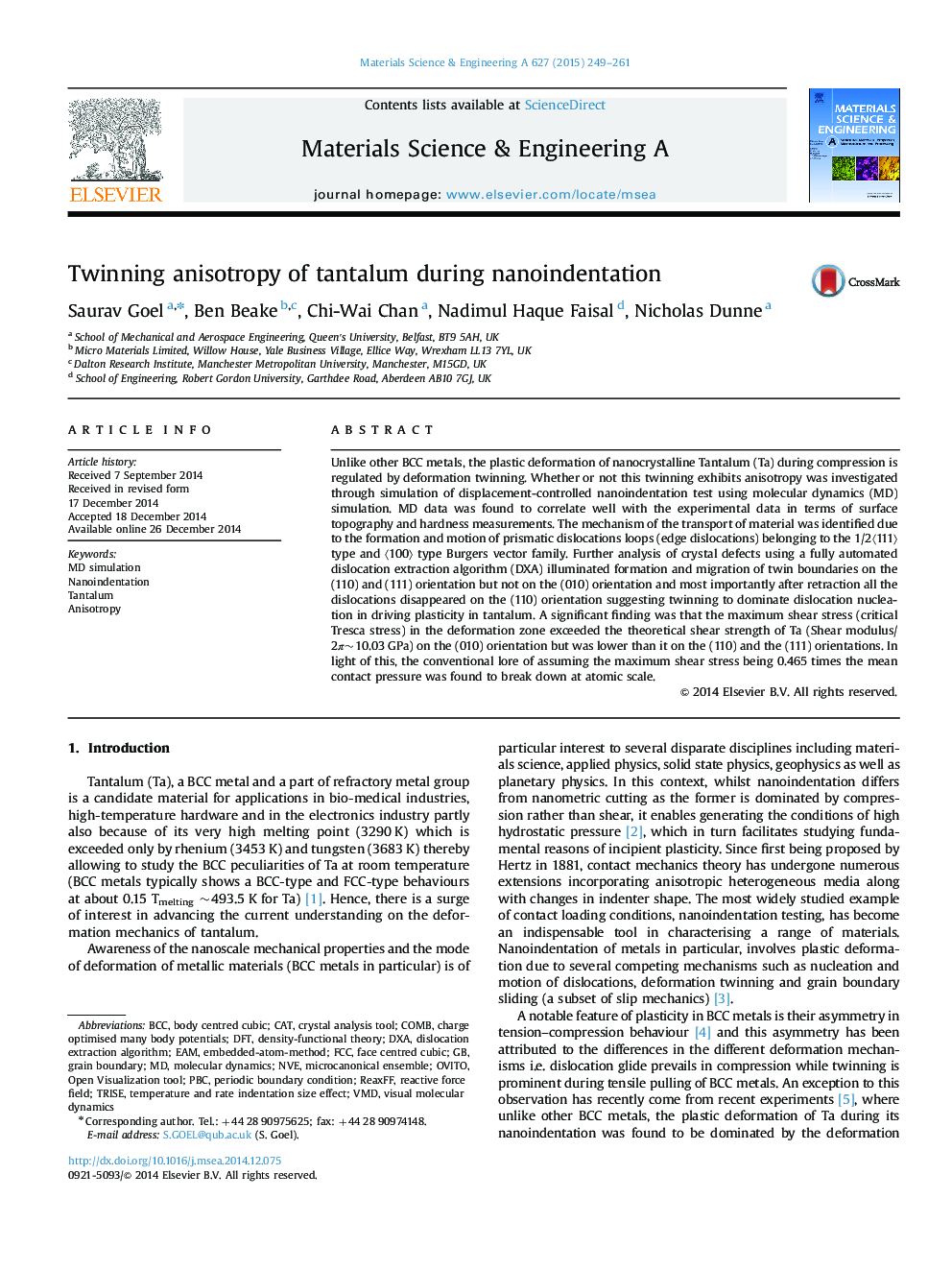| کد مقاله | کد نشریه | سال انتشار | مقاله انگلیسی | نسخه تمام متن |
|---|---|---|---|---|
| 1574536 | 1514716 | 2015 | 13 صفحه PDF | دانلود رایگان |
عنوان انگلیسی مقاله ISI
Twinning anisotropy of tantalum during nanoindentation
دانلود مقاله + سفارش ترجمه
دانلود مقاله ISI انگلیسی
رایگان برای ایرانیان
کلمات کلیدی
NVEPBCReaxFFFCCDXACATVMDBCCDFT - DFTEAM - POMTantalum - تانتالم، تانتال، تانتالیمNanoindentation - دندانه گذاری نانوMolecular dynamics - دینامیک ملکولی یا پویایی مولکولیvisual molecular dynamics - دینامیک مولکولی بصریComb - شانه زدنMD simulation - شبیه سازی MDPeriodic boundary condition - شرایط مرزی دوره ایgrain boundary - مرز دانهBody centred cubic - مرکز مکعب بدنface centred cubic - مکعب چهره محورReactive force field - میدان نیروی واکنش پذیرAnisotropy - ناهمسانگردیDensity-functional theory - نظریه چگالیMicrocanonical ensemble - گروه میکروکنونیک
موضوعات مرتبط
مهندسی و علوم پایه
مهندسی مواد
دانش مواد (عمومی)
پیش نمایش صفحه اول مقاله

چکیده انگلیسی
Unlike other BCC metals, the plastic deformation of nanocrystalline Tantalum (Ta) during compression is regulated by deformation twinning. Whether or not this twinning exhibits anisotropy was investigated through simulation of displacement-controlled nanoindentation test using molecular dynamics (MD) simulation. MD data was found to correlate well with the experimental data in terms of surface topography and hardness measurements. The mechanism of the transport of material was identified due to the formation and motion of prismatic dislocations loops (edge dislocations) belonging to the 1/2ã111ã type and ã100ã type Burgers vector family. Further analysis of crystal defects using a fully automated dislocation extraction algorithm (DXA) illuminated formation and migration of twin boundaries on the (110) and (111) orientation but not on the (010) orientation and most importantly after retraction all the dislocations disappeared on the (110) orientation suggesting twinning to dominate dislocation nucleation in driving plasticity in tantalum. A significant finding was that the maximum shear stress (critical Tresca stress) in the deformation zone exceeded the theoretical shear strength of Ta (Shear modulus/2Ï~10.03Â GPa) on the (010) orientation but was lower than it on the (110) and the (111) orientations. In light of this, the conventional lore of assuming the maximum shear stress being 0.465 times the mean contact pressure was found to break down at atomic scale.
ناشر
Database: Elsevier - ScienceDirect (ساینس دایرکت)
Journal: Materials Science and Engineering: A - Volume 627, 11 March 2015, Pages 249-261
Journal: Materials Science and Engineering: A - Volume 627, 11 March 2015, Pages 249-261
نویسندگان
Saurav Goel, Ben Beake, Chi-Wai Chan, Nadimul Haque Faisal, Nicholas Dunne,